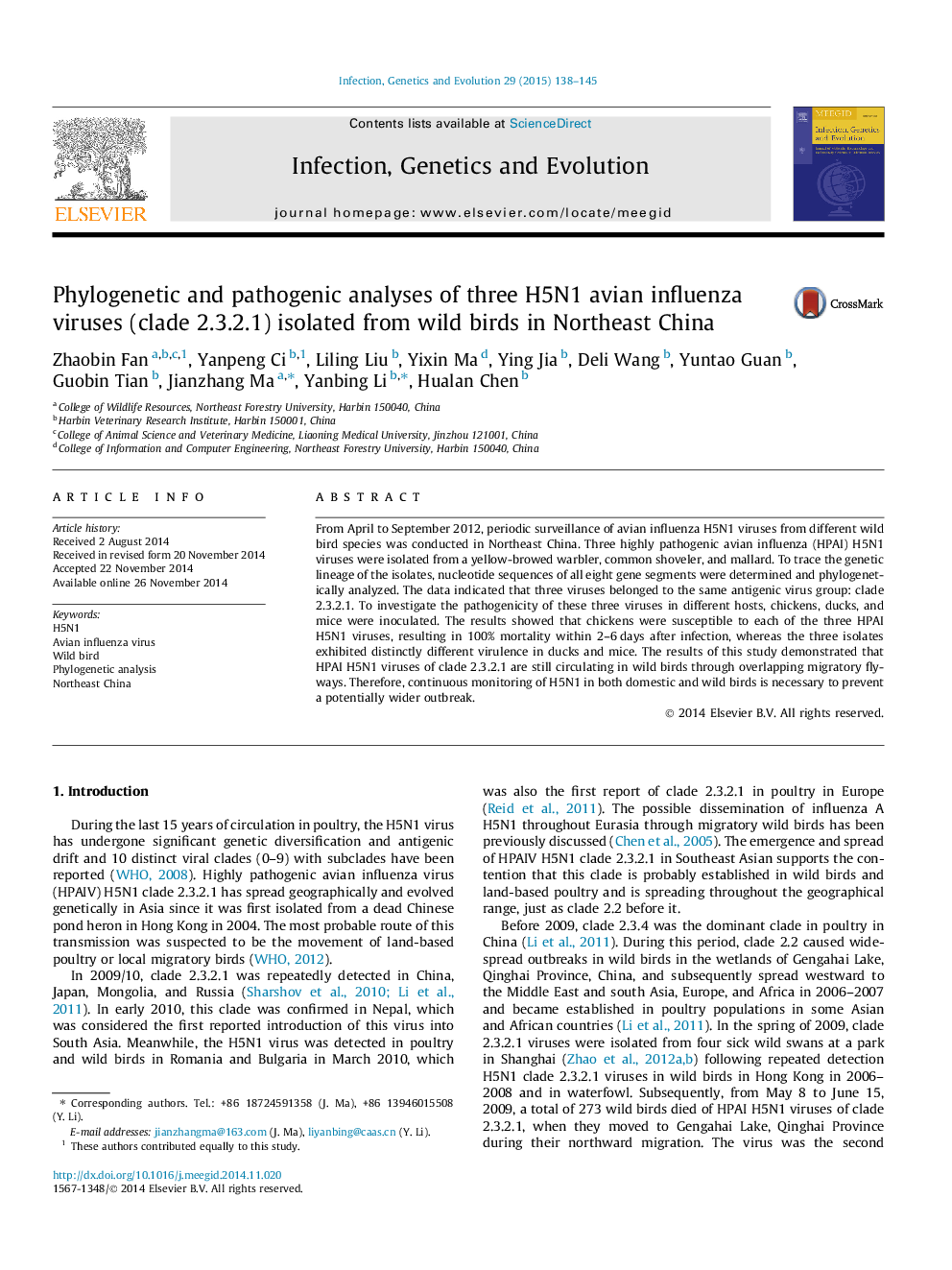| Article ID | Journal | Published Year | Pages | File Type |
|---|---|---|---|---|
| 5909325 | Infection, Genetics and Evolution | 2015 | 8 Pages |
Abstract
From April to September 2012, periodic surveillance of avian influenza H5N1 viruses from different wild bird species was conducted in Northeast China. Three highly pathogenic avian influenza (HPAI) H5N1 viruses were isolated from a yellow-browed warbler, common shoveler, and mallard. To trace the genetic lineage of the isolates, nucleotide sequences of all eight gene segments were determined and phylogenetically analyzed. The data indicated that three viruses belonged to the same antigenic virus group: clade 2.3.2.1. To investigate the pathogenicity of these three viruses in different hosts, chickens, ducks, and mice were inoculated. The results showed that chickens were susceptible to each of the three HPAI H5N1 viruses, resulting in 100% mortality within 2-6Â days after infection, whereas the three isolates exhibited distinctly different virulence in ducks and mice. The results of this study demonstrated that HPAI H5N1 viruses of clade 2.3.2.1 are still circulating in wild birds through overlapping migratory flyways. Therefore, continuous monitoring of H5N1 in both domestic and wild birds is necessary to prevent a potentially wider outbreak.
Related Topics
Life Sciences
Agricultural and Biological Sciences
Ecology, Evolution, Behavior and Systematics
Authors
Zhaobin Fan, Yanpeng Ci, Liling Liu, Yixin Ma, Ying Jia, Deli Wang, Yuntao Guan, Guobin Tian, Jianzhang Ma, Yanbing Li, Hualan Chen,
